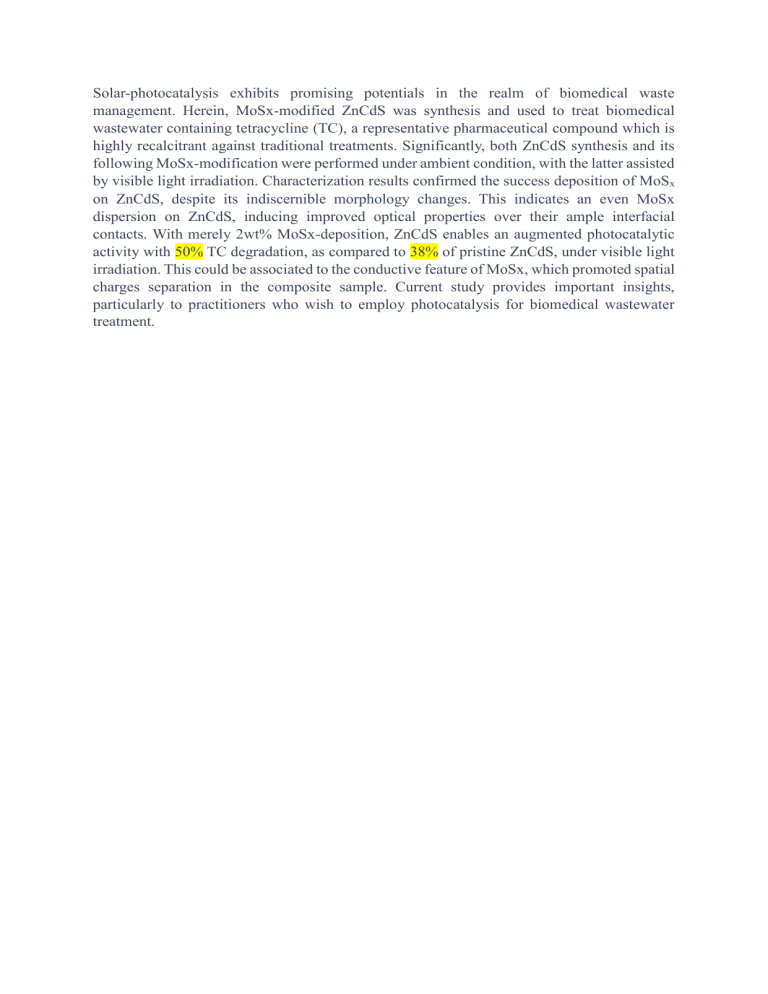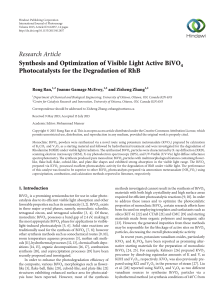
Solar-photocatalysis exhibits promising potentials in the realm of biomedical waste management. Herein, MoSx-modified ZnCdS was synthesis and used to treat biomedical wastewater containing tetracycline (TC), a representative pharmaceutical compound which is highly recalcitrant against traditional treatments. Significantly, both ZnCdS synthesis and its following MoSx-modification were performed under ambient condition, with the latter assisted by visible light irradiation. Characterization results confirmed the success deposition of MoSx on ZnCdS, despite its indiscernible morphology changes. This indicates an even MoSx dispersion on ZnCdS, inducing improved optical properties over their ample interfacial contacts. With merely 2wt% MoSx-deposition, ZnCdS enables an augmented photocatalytic activity with 50% TC degradation, as compared to 38% of pristine ZnCdS, under visible light irradiation. This could be associated to the conductive feature of MoSx, which promoted spatial charges separation in the composite sample. Current study provides important insights, particularly to practitioners who wish to employ photocatalysis for biomedical wastewater treatment.






